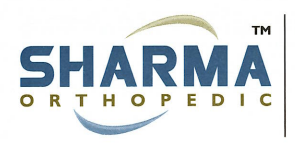- HS Classification Opinions
- 293 Views
Further, in the alternative, if the article is considered a composite good pursuant to General Rule of Interpretation (GRI) 3(b), its functionality as a chair and as a massage apparatus would be considered equally important. The article would then be classified pursuant to GRI 3(c), and heading 9401 would be the later tariff classification.
CLA-2-94:OT:RR:NC:N4:433
Andy Lee
D&A Customs Services Inc.
152 W. Walnut St., Suite 260
Gardena, California 90248
RE: The tariff classification of a seat having massage components from China.
Dear Mr. Lee:
In your letter dated September 08, 2022, on behalf of your client Bodyfriend Inc., you requested a tariff classification ruling. In lieu of samples, illustrative literature and a product description were provided.
The “Hug-Chair 2.0,” is a seat upholstered in synthetic leather and comprised of built-in electro-mechanical components that independently perform massage and heating functions according to user preference. The footrest, armrests, seat foundation, and backrest are affixed to a metal frame. Seating is provided for a single individual. The ergonomically designed structural frame does not possess restrictive features and does not partially or completely encapsulate a user. Further, the upholstered seat does not enfold or restrain a user’s posterior upper body, arms, legs and feet.
The recline angle of the seat is 130. The leg rest is retractable, as the seat reclines the leg rest extends away from the seat foundation. As the seat inclines, the leg rest returns to the seat foundation. A control panel located on the right armrest allows the user to set desired seat positions and engage or disengage the 4 automatic massage settings or the 5 manual massage settings. Located on the left and right side of the headrest are Bluetooth speakers. The seat dimensions are 35.4″ in length, 25.2″ in width, 20″ in depth, 40.5″ in height, and weighs 99 lbs. The seat operates on regular household voltage.
You propose classification under subheading 9019.10, Harmonized Tariff Schedule of the United States (HTSUS), which provides in part for massage apparatus. We disagree. The chair does not enfold the upper body and does not have restrictive features that would make it uncomfortable or restrict its use as seating. We find that the massage features are complementary non-seat components.
The Harmonized Commodity Description and Coding System Explanatory Notes (“ENs”) constitute the official interpretation of the Harmonized System at the international level.
For the purposes of Chapter 94, HTSUS, the term “furniture” means: Any “moveable” articles (not included under other more specific headings of the Nomenclature), which have the essential characteristic that they are constructed for placing on the floor or ground, and which are used, mainly with a utilitarian purpose, to equip private dwellings, hotels, theatres, cinemas, offices, churches, schools, cafes, restaurants, laboratories, hospitals dentists’ surgeries, etc., or ships, aircraft, railway coaches, motor vehicles, caravan-trailers or similar means of transport. (It should be noted that, for the purposes of this Chapter, articles are considered to be “movable” furniture even if they are designed for bolting, etc., to the floor, e.g., chairs for use on ships). Similar articles (seats, chairs, etc.,) for use in gardens, squares, promenades, etc., are also included in this category.
The ENs to Chapter 94, heading 9401 include: lounge chairs, arm-chairs, folding chairs, desk chairs, infants’ high chairs and children’s seats designed to be hung on the back of other seats (including vehicle seats), grandfather chairs, benches, couches (including those with electrical heating, settees, sofas, ottomans and the like, stools (such as piano stools, draughts men’s stools, typists’ stools, and dual purpose stool-steps), seats which incorporate a sound system and are suitable for use with video game consoles and machines, television or satellite receivers, as well as with DVD, music CD, MP3 or video cassette players under the list of exemplars for seats classified in heading 9401, HTSUS.
Seats of this heading may incorporate complementary non-seat components, for example, toy components, a vibration function, music or sound players, as well as lighting features.
The Hug Chair 2.0 massage seat meets the terms of Chapter 94, HTSUS, as it is a floor standing moveable article used mainly with a utilitarian purpose, that being, to equip private dwellings for rest, relaxation, storage or display and is designed for the personal use, convenience, and comfort of the dweller. The subject article also falls within the construct of heading 9401, HTSUS, in that this heading covers all seats including those that incorporate complementary non-seat components. Further, the term “furniture” embraces articles of utility that are designed for the “use, convenience, and comfort of the dweller,” as distinguished from articles that are “subsidiary adjuncts and appendages designed for the ornamentation of a dwelling or business place, or which are of comparatively minor importance so far as use, comfort, and convenience are concerned.” The built-in massage and heating components of the seat will be used only for brief periods at the discretion of the user, the remainder of the time the seat will perform in a utilitarian capacity, that being furniture. Based on the facts, the subject article is an upholstered seat. Inclusion of the massage and other components do not alter the essential character of the article.
Further, in the alternative, if the article is considered a composite good pursuant to General Rule of Interpretation (GRI) 3(b), its functionality as a chair and as a massage apparatus would be considered equally important. The article would then be classified pursuant to GRI 3(c), and heading 9401 would be the later tariff classification.
The applicable subheading for the subject article will be 9401.71.0011, HTSUS, which provides for “Seats (other than those of heading 9402), whether or not convertible into beds, and parts thereof: Other seats, with metal frames: Upholstered: Other household.” The rate of duty will be free.
Section 301 Trade Remedy: Pursuant to U.S. Note 20 to Subchapter III, Chapter 99, HTSUS, products of China classified under subheading 9401.71.0011, HTSUS, unless specifically excluded, are subject to an additional 25 percent ad valorem rate of duty. At the time of importation, you must report the Chapter 99 subheading, i.e., 9903.88.04, in addition to subheading 9401.71.0011, HTSUS, listed above. The HTSUS is subject to periodic amendment, so you should exercise reasonable care in monitoring the status of goods covered by the Note cited above and the applicable Chapter 99 subheading. For background information regarding the trade remedy initiated pursuant to Section 301 of the Trade Act of 1974, including information on exclusions and their effective dates, you may refer to the relevant parts of the USTR and CBP websites, which are available at https://ustr.gov/issue-areas/enforcement/section-301-investigations/tariff-actions and https://www.cbp.gov/trade/remedies/301-certain-products-china respectively.
Duty rates are provided for your convenience and are subject to change. The text of the most recent HTSUS and the accompanying duty rates are provided on the World Wide Web at https://hts.usitc.gov/current.
This ruling is being issued under the provisions of Part 177 of the Customs Regulations (19 C.F.R. 177).
A copy of the ruling or the control number indicated above should be provided with the entry documents filed at the time this merchandise is imported. If you have any questions regarding the ruling, contact National Import Specialist Dharmendra Lilia at dharmendra.lilia@cbp.dhs.gov.
Sincerely,
Steven A. Mack
Director
National Commodity Specialist Division








